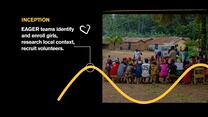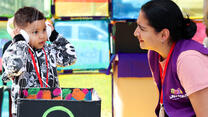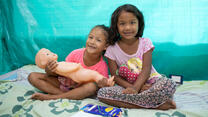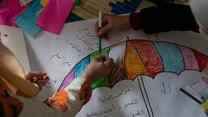Throughout Sierra Leone, poverty, early/forced marriage, the Ebola Virus Disease (EVD) outbreak of 2014-2016 have created barriers to education for adolescent girls.i As a result, many girls never attend school or drop out after a few years because they do not have financial or social support. Girls who without access to education experience greater levels of poverty, food insecurity, and further degradation of their personal agency for decision making, a situation reinforced by community perspectives on gender roles and norms.
To address these concerns, the International Rescue Committee (IRC) and consortium partners1 implemented the EAGER program from 2019-2023. The program creates opportunities for OOS girls ages 13-192 to build functional3 skills in literacy, numeracy, financial literacy, and life skills while strengthening their social and emotional assets and sense of agency in shaping their lives.
To understand how implementation costs are affected as the program grows, the Best Use of Resources (BUR) built a scenario model to programmatic cost at scale. The model will support advocacy efforts for the adoption or adaptation of components of the program by stakeholders4 who may be interested in continuing or replicating implementation. Implementation by the government or other stakeholders will ideally build upon the curriculum produced by the consortium, however contextualization costs may be needed to adapt content. Other adaptations could be considered such as the choice to include the additional support to the girls, such as the empowerment packages and conditional cash transfers. To inform this decision process, the scenario model focuses on how costs change with and without the inclusion of these support packages.
Resource



